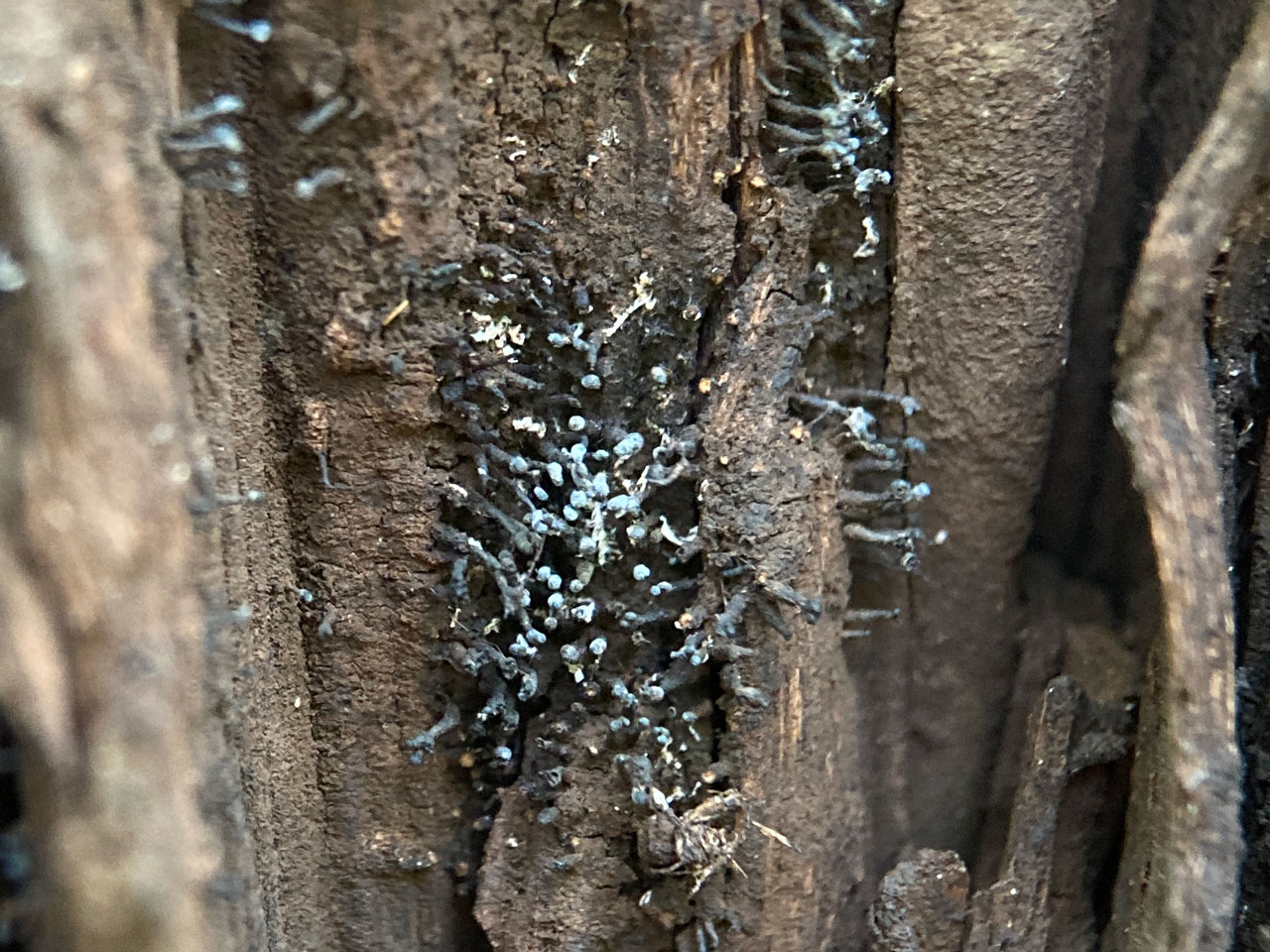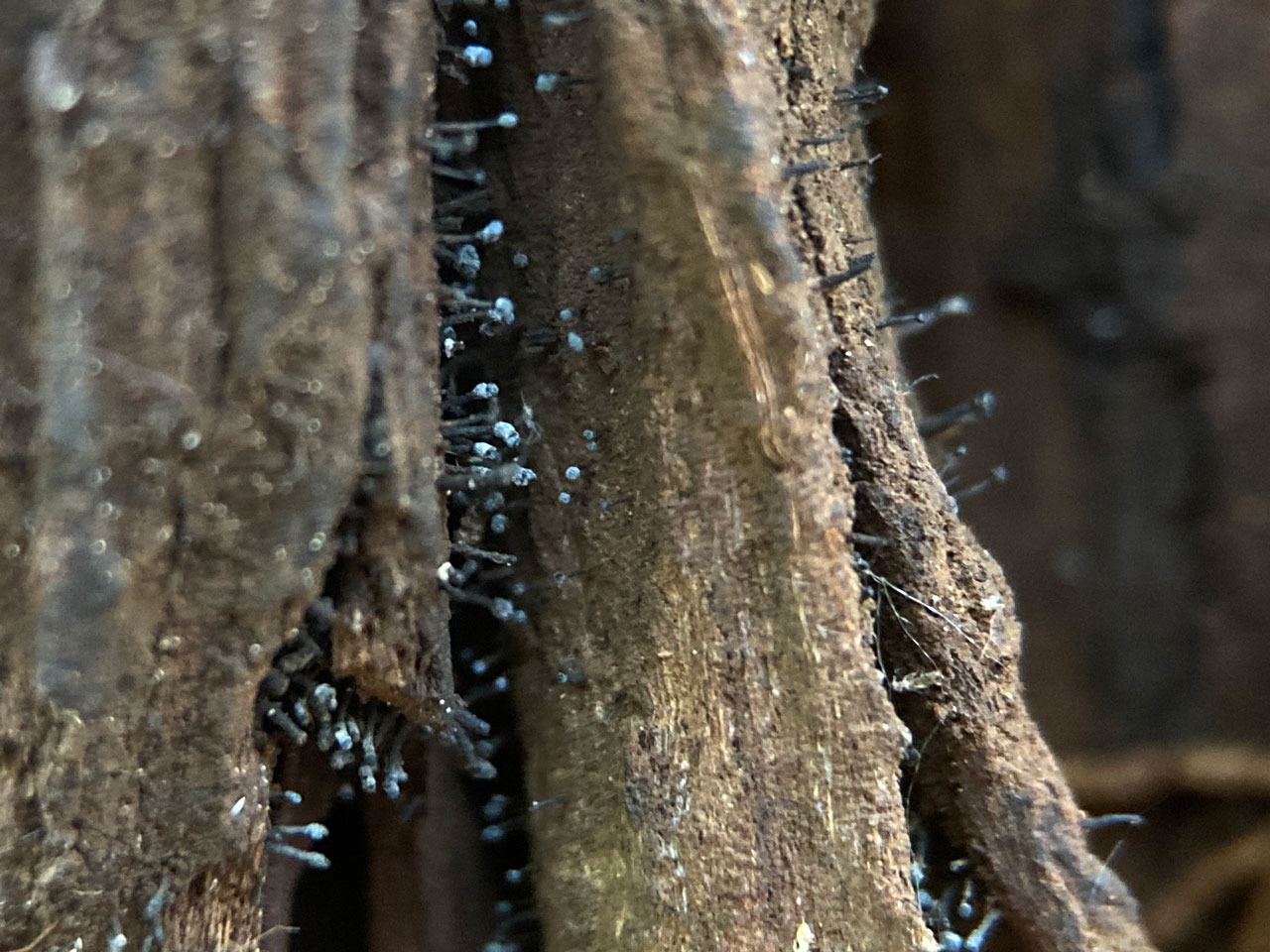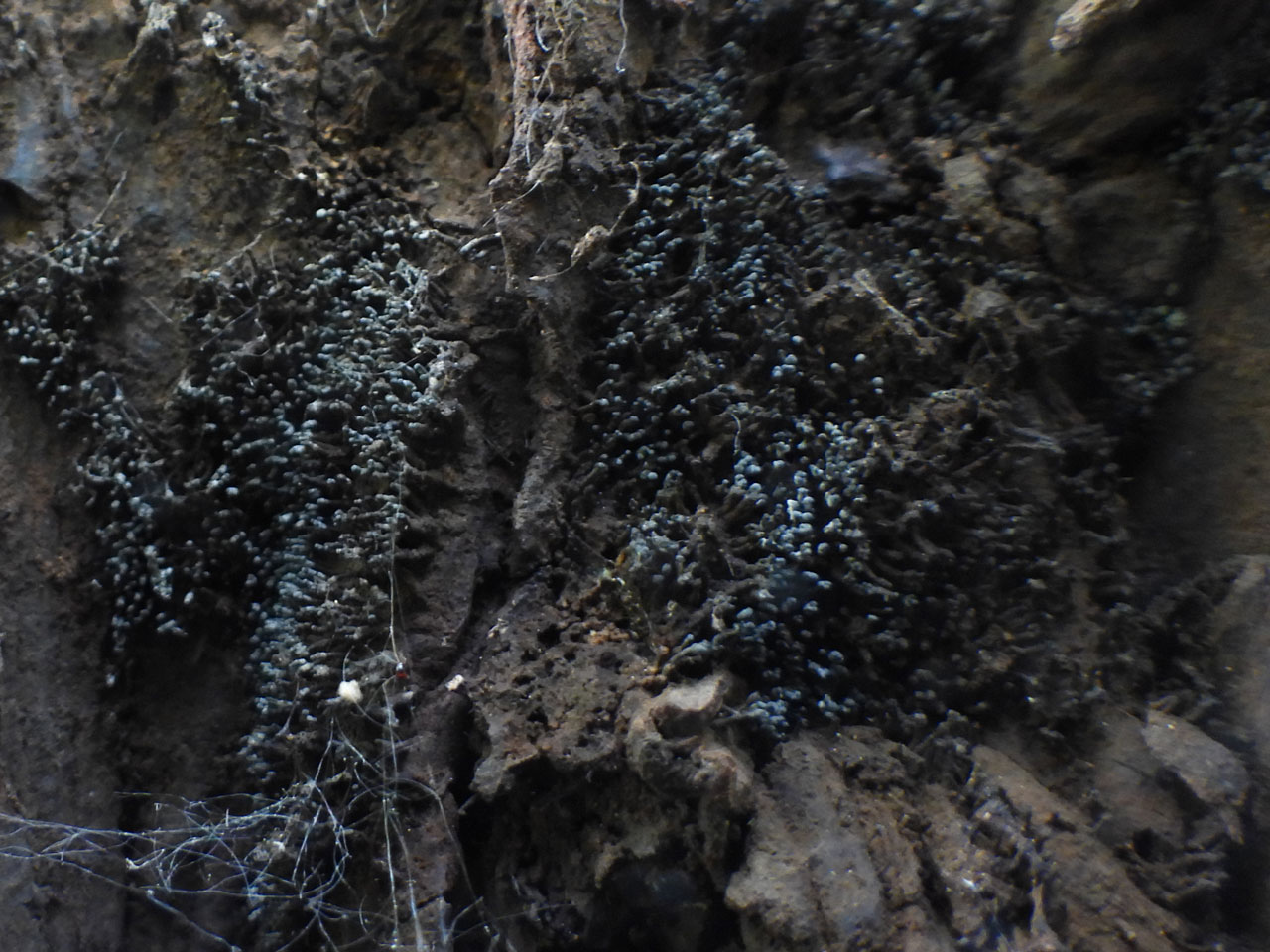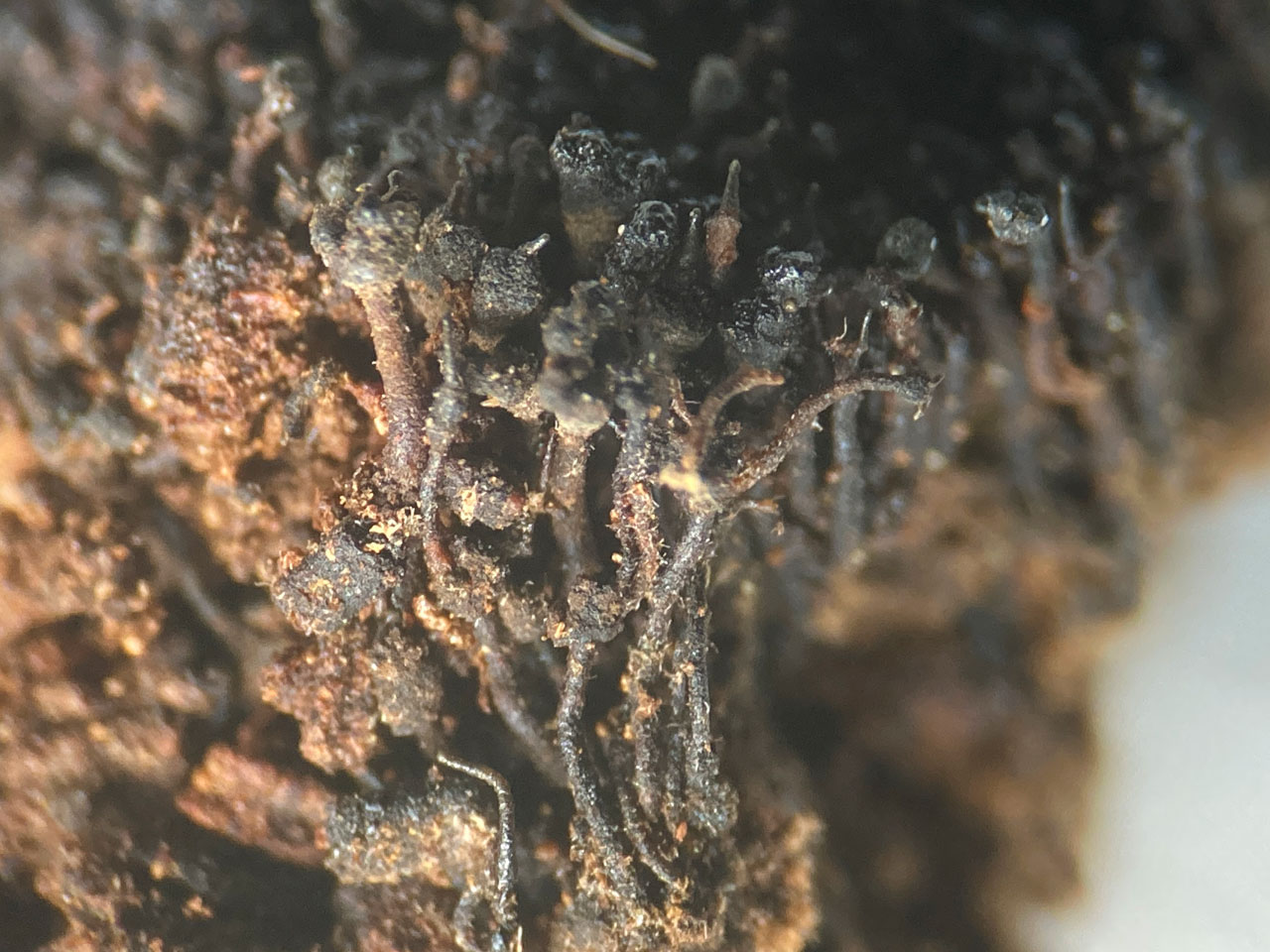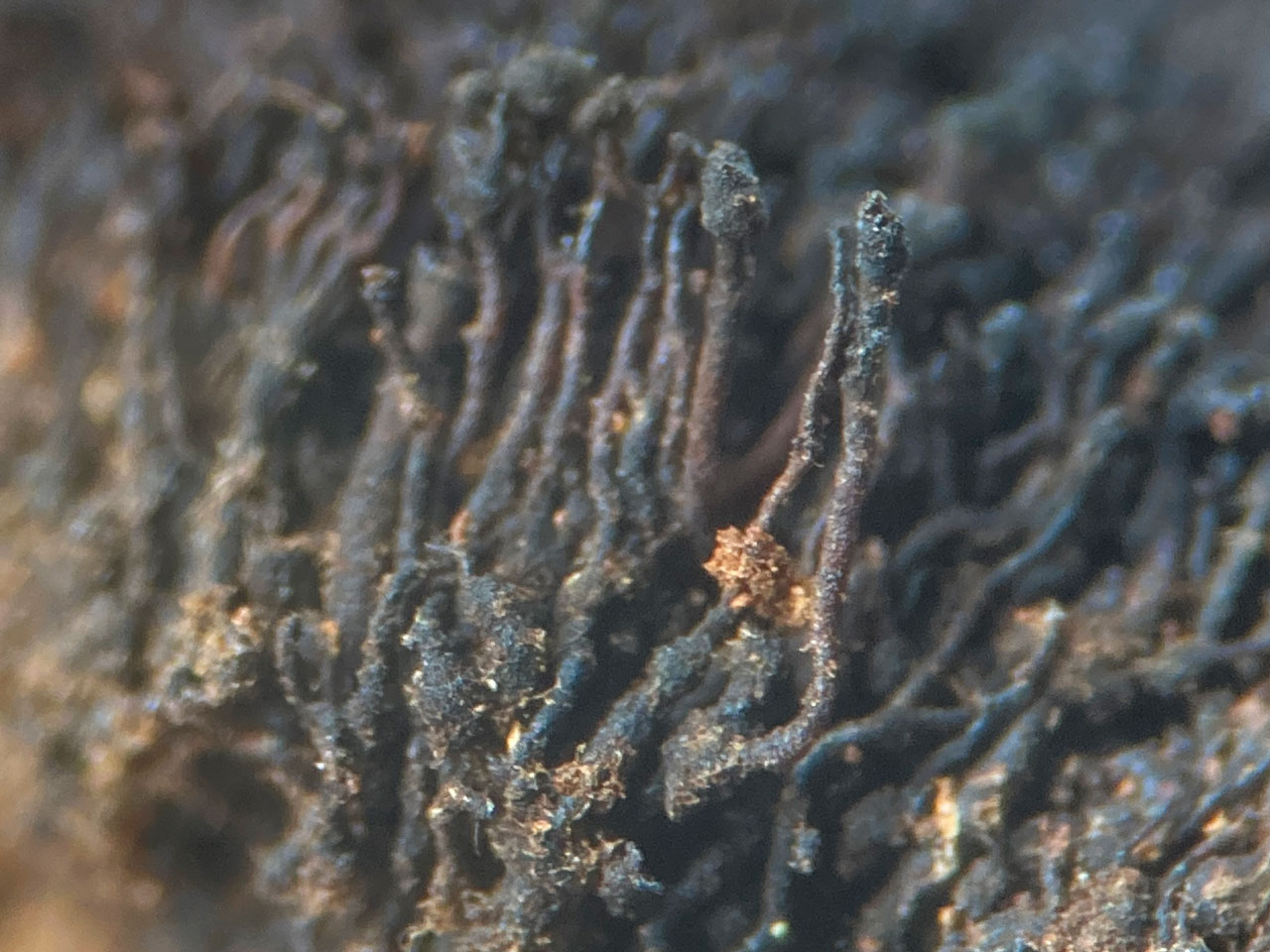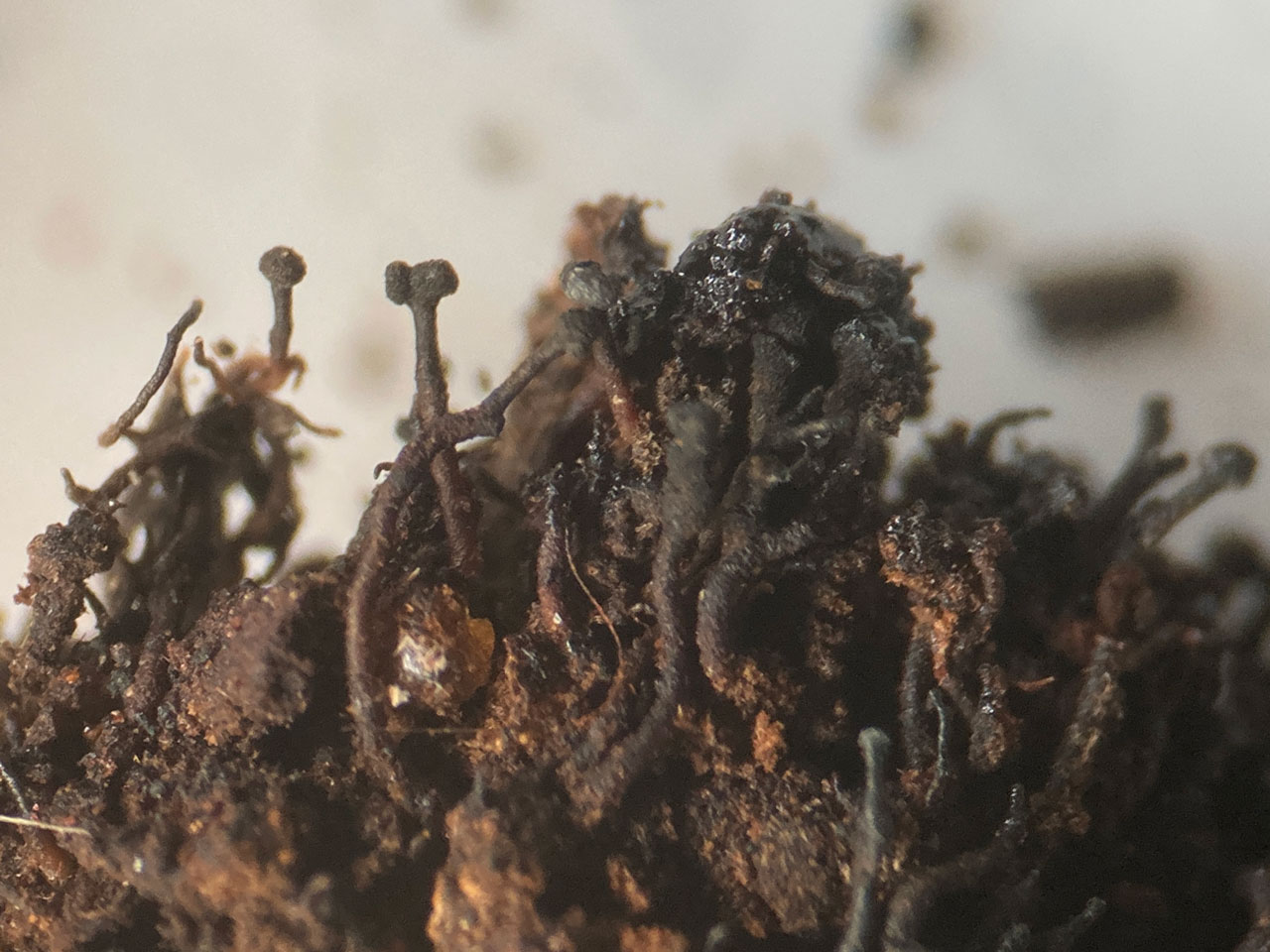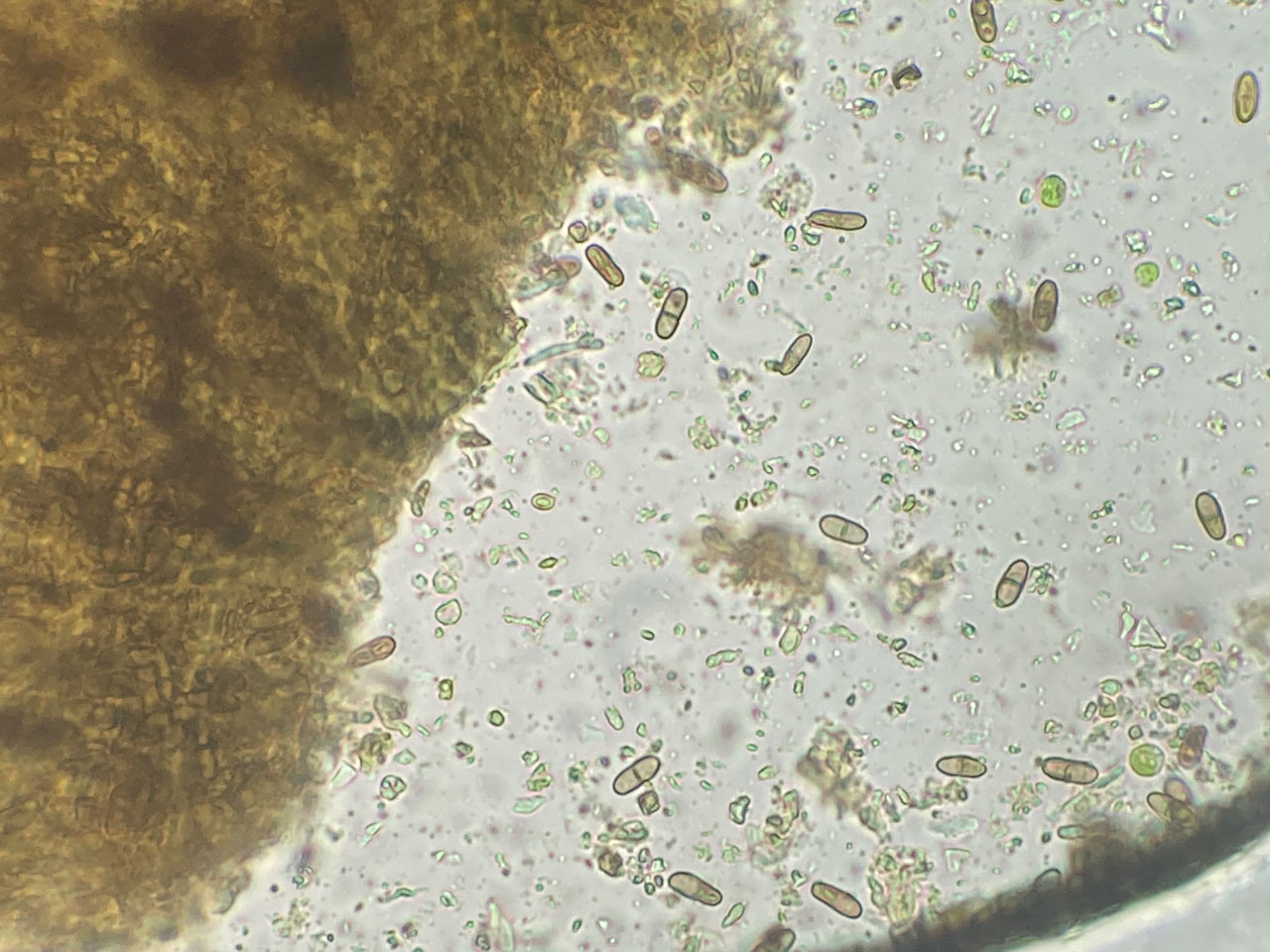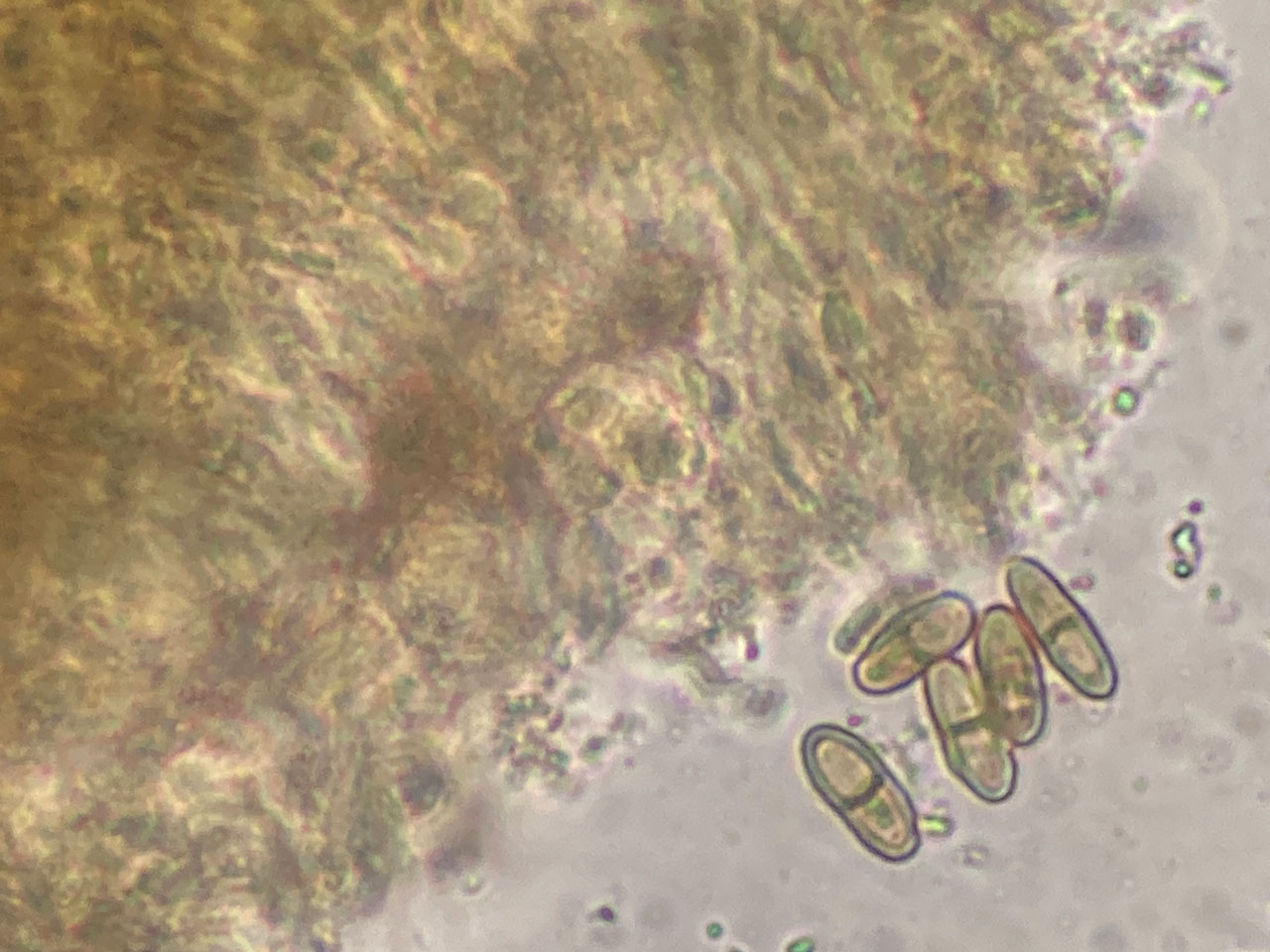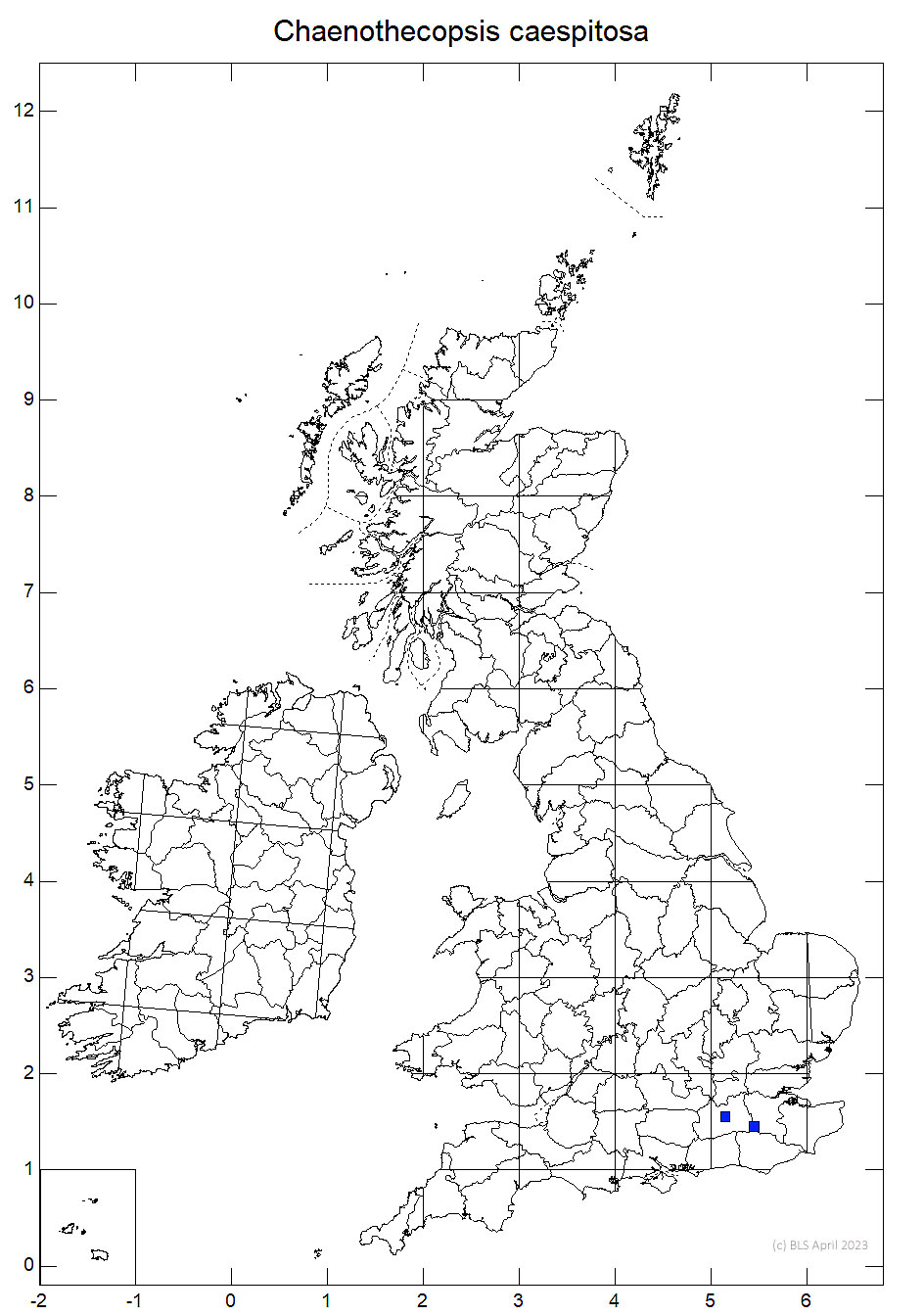Chaenothecopsis caespitosa
Once found this fungus is distinctive, with very robust pinhead apothecia, but it can easily be overlook as the masses of compact tufts can form crusts where the pinheads are not very visible. Found in crevices and wound tracks on Yew trees where it appears to grown on accumulations of exudates. Rare but probably also overlooked.
Apothecia in effuse masses of compact tufts, 1.2–4 mm tall, black; heads 0.18–0.38 mm diam., hemispherical to lens-shaped, dark grey to black, sometimes pruinose; the stalk very robust, 0.12–0.25 mm diam. near the base, sometimes branched, cylindrical to distinctly tapering, similarly coloured to the head. Hamathecium of paraphyses, 1–1.5 µm diam. Asci 65–85 × 5–6 µm, narrowly cylindrical, the apex thickened and with an internal canal to ca 3 µm in length, 8-spored. Ascospores arranged uniseriately, pale brown, (7.5–) 9–12 (–14) × 3–4.5 µm, cylindric-ellipsoidal to ± cylindrical, mostly 1-septate but with occasional aseptate spores within the same asci as 1-septate spores, not constricted at the septa, thick-walled, smooth to slightly rough,
without a perispore.
Not associated with algae. Easily distinguished by its large robust apothecia that arise in tufts, and unlikely to be congeneric with the type of Chaenothecopsis. The presence of paraphyses is not typical of the genus, but has been reported for other resinicolous species (e.g. Tuovila et al. 2014).
On bark and lignum of Yew, especially in wound tracks and areas of decay, recorded once from a decaying polypore on a Yew stump. Appears to grown on exudates in wound tracks and where accumulated in crevices.

Rare but probably overlooked. S. and C. England (Hampshire to Kent and north to Nottinghamshire), Scotland (Selkirk).
Listed as Near Threatened, but possibly better regarded as Data Deficient
Sanderson, A., Cannon, P., Coppins, B., & Simkin, J. (2025). Mycocaliciales: Sphinctrinaceae, including Chaenothecopsis, Mycocalicium, Phaeocalicium, Sphinctrina and Stenocybe. Revisions of British and Irish Lichens 52: 1–15.
Tuovila, H., Davy, M.L., Yan, L.H., Huhtinen, S. & Rikkinen, J. (2014). New resinicolous Chaenothecopsis species from China. Mycologia 106: 989–1003.
Text by Neil A Sanderson base on Sanderson et al (2025)
